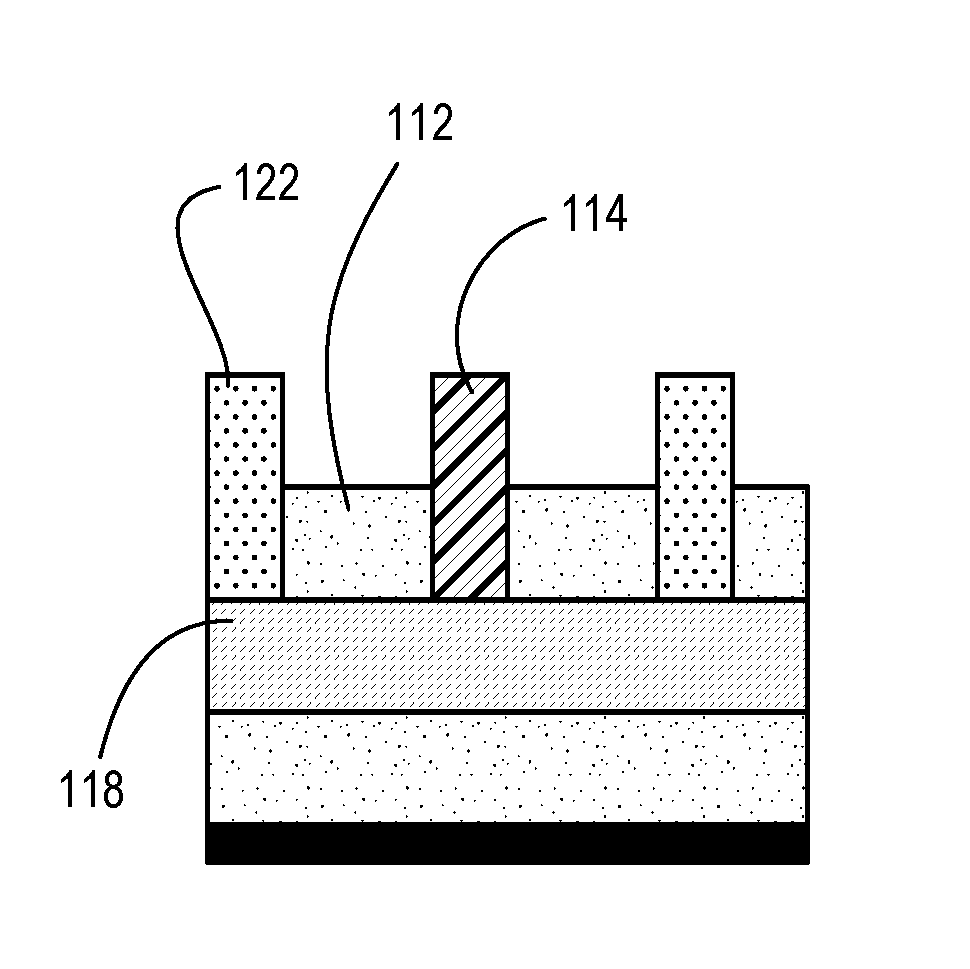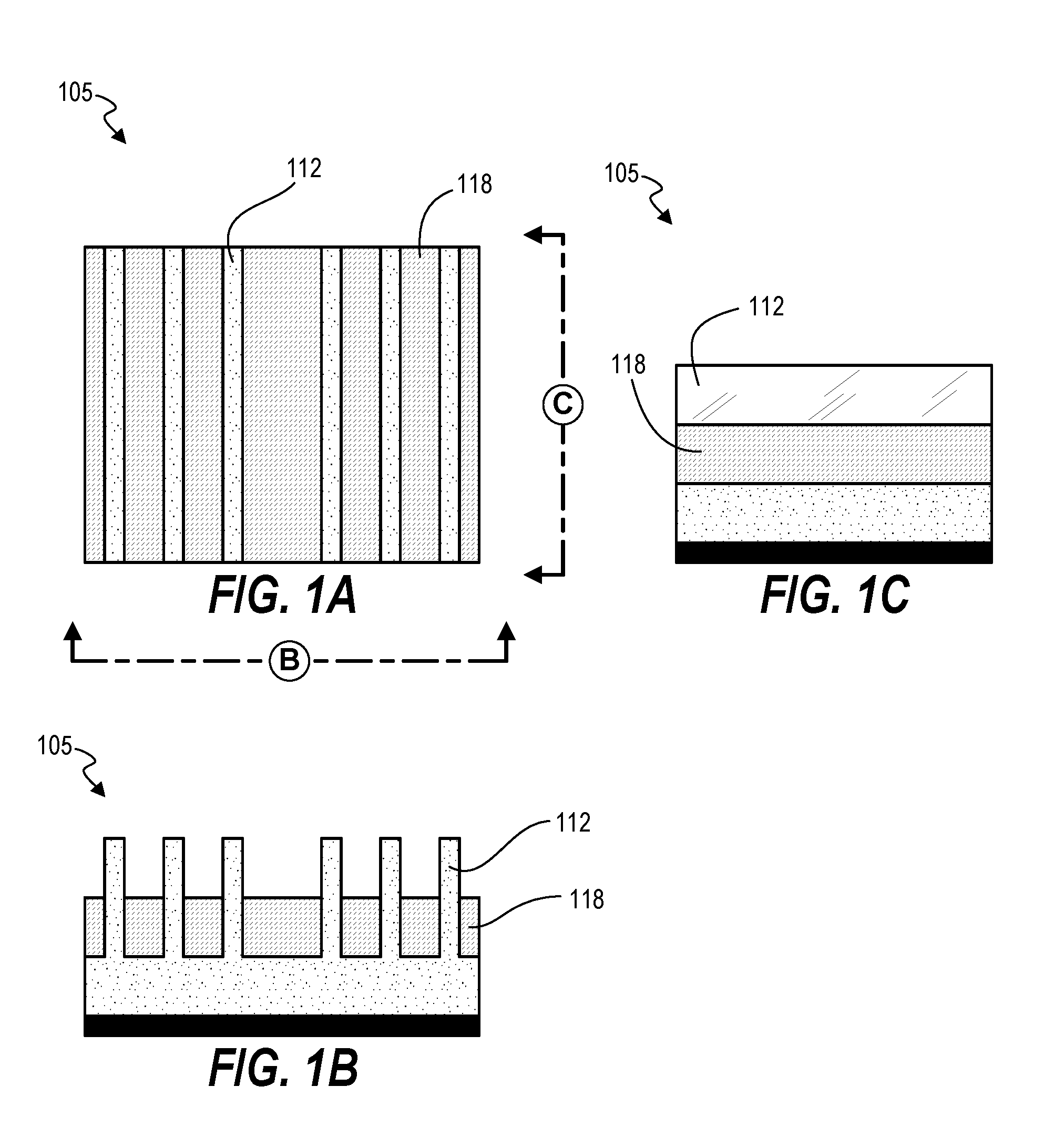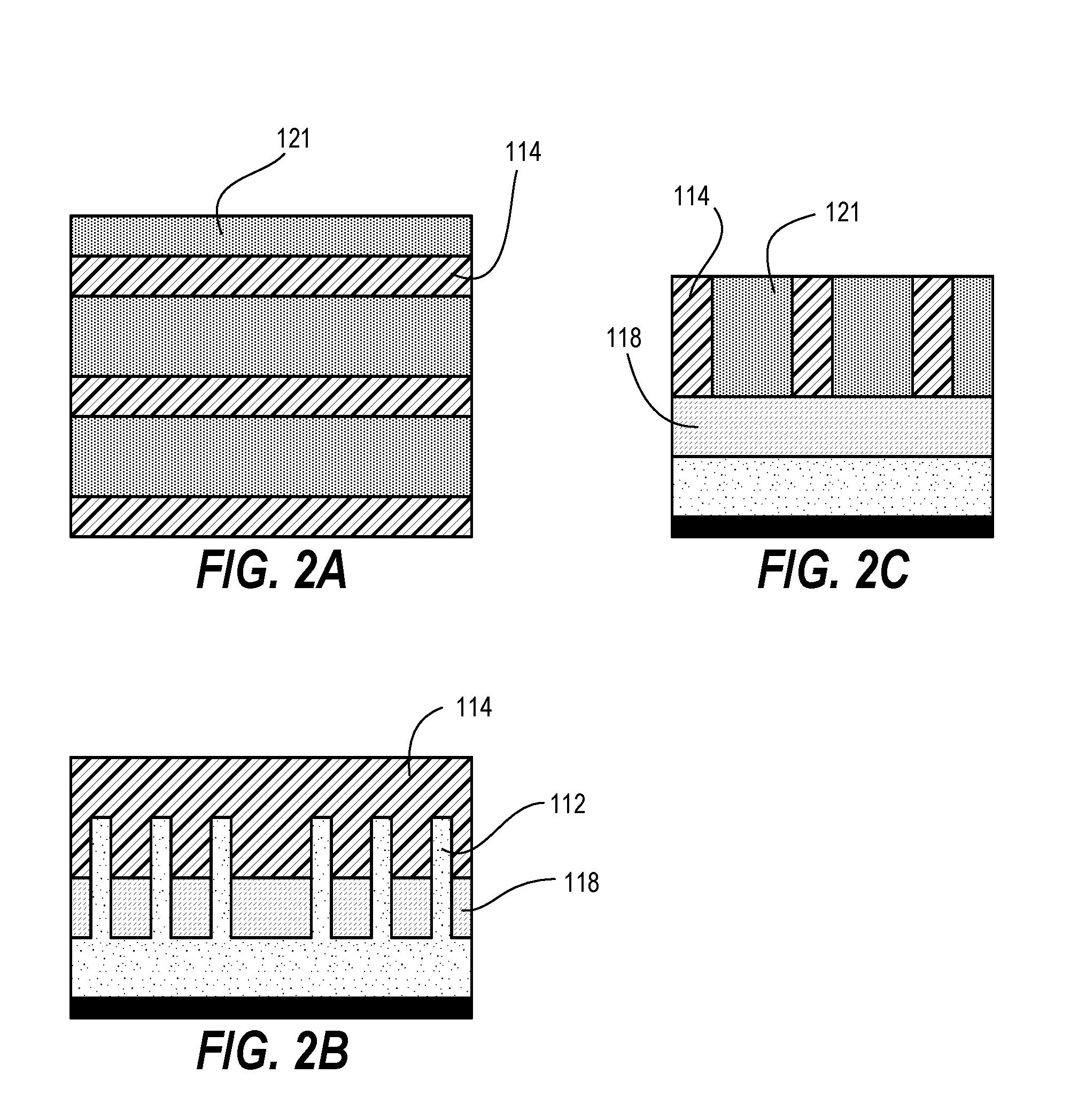Method of Patterning Without Dummy Gates
- Summary
- Abstract
- Description
- Claims
- Application Information
AI Technical Summary
Benefits of technology
Problems solved by technology
Method used
Image
Examples
Embodiment Construction
[0035]Techniques herein provide precise cuts for fins and nanowires without needing dummy gate pairs to ensure accuracy. Techniques herein include leaving fins uncut until gates are opened, and then one opened gate structure is used to focus placement of cuts. Surrounding dielectric material is used as part of an etch mask to ensure cuts happen at specified locations. With etch selectivity to gate spacer material, uncovered fins—further defined by an etch mask formed thereon—can be etched inside / within a space formerly occupied by a gate structure. After etching the uncovered fins, the space can be filled with dielectric material. Such filler dielectric material can remain in place which results in the space formerly occupied by the gate structure does not become metallized but remains as a dielectric. This means that there are no metallized dummy gates left on the device, and that pairs of dummy gates are not needed to be designed into the cell. Accordingly, with techniques herein,...
PUM
 Login to View More
Login to View More Abstract
Description
Claims
Application Information
 Login to View More
Login to View More - R&D
- Intellectual Property
- Life Sciences
- Materials
- Tech Scout
- Unparalleled Data Quality
- Higher Quality Content
- 60% Fewer Hallucinations
Browse by: Latest US Patents, China's latest patents, Technical Efficacy Thesaurus, Application Domain, Technology Topic, Popular Technical Reports.
© 2025 PatSnap. All rights reserved.Legal|Privacy policy|Modern Slavery Act Transparency Statement|Sitemap|About US| Contact US: help@patsnap.com



